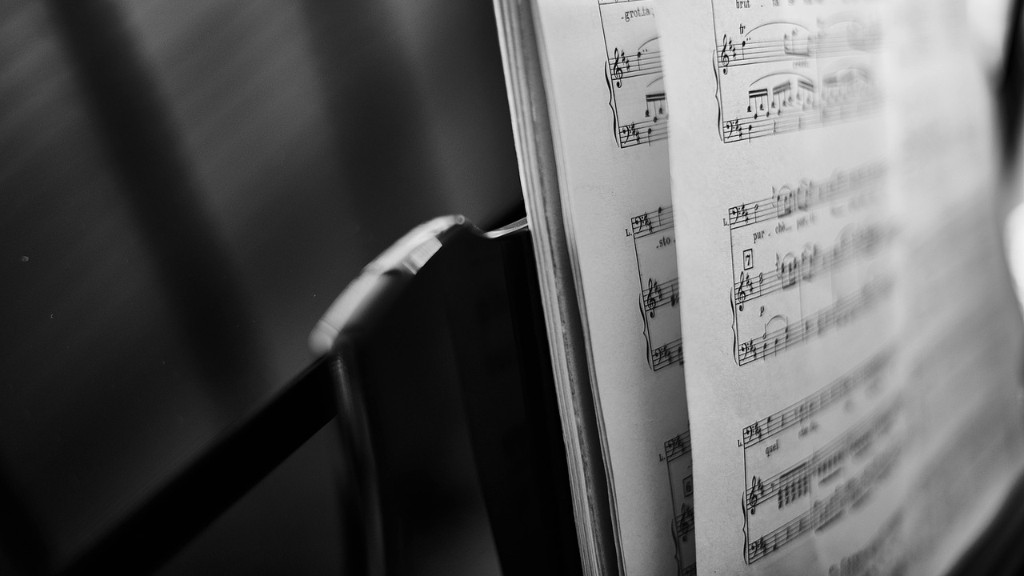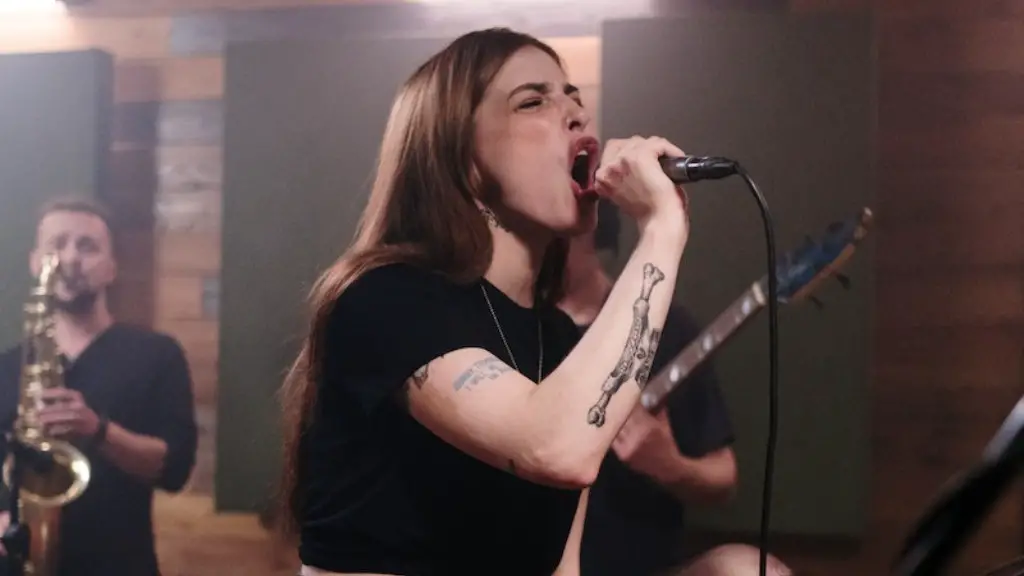Dubstep is a genre of electronic dance music that originated in South London in the late 1990s. It is generally characterized by sparse, syncopated rhythmic patterns with prominent sub-bass frequencies. The style emerged as a development of two-step garage, drawing on a lineage of related styles such as dub, techno, breakbeat, and drum and bass. In the United Kingdom, the earliest dubstep releases date back to 1998, and the genre began to achieve mainstream popularity there in the late 2000s.
There’s no one answer to this question – dubstep is a genre with a lot of room for creativity, so there are many ways to approach composition. Some producers start with a simple drum loop and build up from there, adding basslines, synth patterns, and other elements until they have a full track. Others might begin with a melody or chord progression, using that as the foundation for the rest of the song. There are endless possibilities, so experiment and see what works best for you.
How can I start making dubstep music?
1. Master Modulation: To get that big, powerful dubstep sound, you need to master modulation. This means using different techniques to change the sound of your basslines and drums. By modulating your sounds, you can create a more dynamic and exciting track.
2. Learn From The Pros: Take some time to study the tracks of your favorite dubstep producers. See how they use modulation to create their signature sound. Then try to replicate that in your own tracks.
3. Tighten Up Your Sub: A lot of dubstep tracks have a very tight, focused sub bass sound. To achieve this, you need to use a low pass filter to remove the higher frequencies from your bassline. This will give you a deeper, more pounding sound.
4. Use Sidechain Compression: Sidechain compression is a key element in creating the pumping, throbbing sound of dubstep. By using a compressor to duck the level of your bassline when the kick drum hits, you can create a tight, cohesive sound.
5. Fill In The Offbeats: One of the hallmarks of dubstep is the use of offbeat rhythms. To create this effect, you need to fill in the space between the beats
Many producers find it difficult to make dubstep that sounds good because it requires a very specific sound palette and production techniques. As a result, dubstep is one of the most difficult genres of music to produce.
What key is dubstep usually in
E Minor and G Minor are two of the most popular keys for dubstep tunes. This is likely because these keys allow for a wide range of bass frequencies, which is a key element of the dubstep sound. Additionally, these keys are relatively easy to mix and match with other genres of electronic music, making them popular keys for DJs and producers who want to create hybrid tracks.
Dubstep is a genre of electronic dance music that originated in South London in the early 2000s. Dubstep is generally characterised by the use of syncopated rhythmic patterns, prominent basslines, and a dark tone.
How many bars is a dubstep drop?
There are a few things to keep in mind when it comes to drops in a song. First, a drop can vary in length but are usually 8 to 16 bars. Second, the second drop is typically either the same length as the first, or slightly longer to develop a little bit of additional energy. Finally, it’s important to have a good lead up to the drop so that the transition is smooth and effective.
The sound of dubstep is characterized by its heavy bass and repetitive, syncopated beats. The original dubstep producers were El-B, Steve Gurley, Oris Jay, and Zed Bias, who were active in the London underground music scene in the late 1990s and early 2000s. Dubstep has since evolved and been taken up by a wide variety of artists, from mainstream pop to underground grime and dub.
Is dubstep BPM 70 or 140?
Dubstep can either be 140BPM or 70BPM, depending on what you want it to sound like. If you want it to sound spacier and slower, then 70BPM would be better. Your software may also automatically choose the BPM for you.
Kode9 is a key figure in the development of contemporary underground dance music movements such as footwork. He is the founder of the acclaimed Hyperdub label and has been a champion of dubstep music since its inception. His unique sound and philosophy has influenced a generation of electronic music artists and DJs.
What is the hardest part of making music
The hardest part of songwriting varies for everyone. For some, it may be coming up with clever and original lyrics. Others may struggle to find a unique idea to write about. And some may find it difficult to get more emotion into their songs.
If you’re struggling with any part of songwriting, know that you are not alone. Many songwriters go through dry spells or have trouble with certain aspects of songwriting. The important thing is to keep writing and to not get discouraged.
What is the most popular BPM?
120 BPM120 BPM seems to be the sweet spot for most people. It’s fast enough that it feels energetic, but not too fast where it feels uncomfortable.
What genre has the highest BPM?
drum and bassWith its extremely fast tempo, drum and bass is often considered the quickest genre of electronic dance music. According to AllMusic, drum and bass generally has tempos ranging from 150 to 180 beats per minute (BPM).
Is 125 BPM normal heart rate?
An resting heart rate lower than 60 BPM is normal for some people who are very athletic and have a slow resting heart rate. An resting heart rate of 25 BPM is normal for some people. An resting heart rate higher than 100 BPM is often defined as tachycardia, while bradycardia is if it’s lower than 60 BPM.
What is 65 BPM?
To low-ball a bit, let’s talk about 60 BPM. This is perhaps the easiest, most relaxing tempo. A good version of “Somewhere Over the Rainbow” is about 94 BPM, about as
What BPM should dubstep be?
The most common tempo at which dubstep is made is 140 BPM. Some records are produced with a slight deviation from the norm and you can find tracks ranging from 128 to 160 BPM. This usually happens when dubstep is fused with other genres, for example a bass house track that features a dubstep drop.
An intro is typically a multiple of 16 bars in length, and often introduces a new instrument or sound every 32 beats. Some intros open with drums and gradually add layers of instruments. This can help create a sense of build-up and anticipation for the listener.
Is dubstep a dead genre
The key takeaways from this article are that dubstep music was extremely popular from 2010 to 2011, but since then interest in the genre has been slowly declining. Today, the interest in dubstep music is almost nonexistent, and that’s why dubstep can be considered dead.
Dubstep rhythms are usually syncopated, and often shuffled or incorporating tuplets. The tempo is nearly always in the range of 138–142 beats per minute, with a clap or snare usually inserted every third beat in a bar. This makes for a very energetic and driving sound that is perfect for getting people moving on the dancefloor.
Is dubstep a trap?
Trap music is a relatively new genre that has emerged in the past few years. It is a hybrid of hip hop, rap, electronic dance music, electro house, and dubstep. Trap music is characterized by its hard-hitting, dark, and often gritty sound. It often features Trap beats, which are characterized by their 808 drums, synthesizers, and hi-hats. Trap music has been gaining in popularity in recent years, and has been championed by artists such as Lil Pump, 21 Savage, and Migos.
Dubstep is a genre of electronic dance music that originated in the early 2000s in the United Kingdom. It is characterized by sparse, syncopated rhythms and heavy basslines.
Blake, Skrillex, Burial, Nero, Mount Kimbie, Bassnectar, Krewella, and Knife Party are all popular dubstep artists.
What is trap dubstep called
The EDM trap sound has evolved over the past few years to incorporate elements of dubstep. This new style is typically played at a faster tempo (140 BPM) with heavier bass drops. It has become increasingly popular since 2013 and shows no signs of slowing down.
Wobblestep is a type of Dubstep that focuses on the wobble aspect of the music. The wobble is the heavy synthesizer bass line with smooth pitch bends that drives the low-end of the frequency spectrum. Here, it’s accentuated and placed up front. This makes for a more bass-heavy and hypnotic sound that is perfect for the club or the dance floor.
Warp Up
There’s no one answer to this question since there are many different ways to compose dubstep. However, some tips on how to compose dubstep might include creating a strong bass line, layering different sounds and effects, and using syncopation to create a dynamic and energetic sound. Experimentation is key when composing dubstep, so be sure to try out different ideas and see what works best for you.
Making dubstep can be easy and fun once you get the hang of it. There are various ways to go about making this type of music, and it all comes down to preference in the end. With some practice, anyone can learn how to compose their own dubstep.

